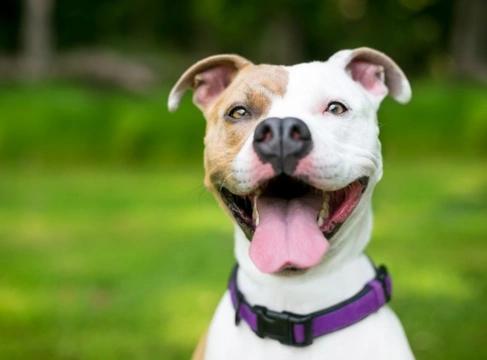
What exactly is it that causes bad breath in dogs?
Bad breath in dogs is a bit like canine obesity in one respect – it’s so common that a large percentage of dog owners think it is perfectly normal and not a problem, when in fact, it should never be considered to be normal or acceptable, and can actually cause a wide range of different problems for the dog in question.
Whilst dogs don’t tend to have minty fresh breath even when their teeth are scrupulously clean and in great condition, neither should your dog’s breath ever smell foul; and if it does, this indicates problems with your dog’s teeth and/or gums that are apt to be painful and uncomfortable for them, as well as potentially causing them problems when they’re eating.
However, when it comes to what actually causes the bad breath smell that accompanies dental problems and gum disease in dogs, not many people have the answer – and the correct answer is actually “a type of bacterial family that are collectively called Porphyromonas.”
This family of bacteria not only cause your dog’s foul breath, but also lots of the problems that accompany bad breath, and in this article we’ll look at exactly what Porphyromonas are and how they affects your dog’s teeth and gums in more detail.
Read on to learn more.
Why are Porphyromonas a problem?
Porphyromonas are one of the main bacterial cultures that result in the development of periodontitis in dogs, which is a type of dental disease. Many if not most dogs have some level of the bacterial culture in their mouths at any given time, but it is only when they reach significant levels that they begin to cause problems, and this tends to occur more frequently as dogs get older and the effects of a lifetime of dental neglect begin to become apparent.
However, regular brushing of your dog’s teeth can remove this bacteria and help to protect your dog’s teeth against later damage – but unfortunately, the vast majority of dog owners in the UK neglect to do this, and feeding dental sticks or other so-called dental treats doesn’t even come close to providing a suitable substitute for proper dental care.
How do Porphyromonas harm your dog’s teeth?
If your dog’s teeth aren’t brushed regularly and kept clean, tartar and plaque develop on the surface of the tooth enamel, and begin to work their way under the gumline too. This process leads to irritation of the gums, resulting in the redness and sensitivity to bleeding that most of us know as gingivitis.
Over time, gingivitis can develop into periodontitis, which is a dual-purpose threat to your dog’s teeth that causes inflammations of the teeth’s roots and jawbone, as well as infection underneath the gumline, which is apt to be painful and make it difficult for your dog to eat comfortably.
Porphyromonas are a collective of different strains of bacteria from within the same wider family cluster that help to contribute to the development of periodontitis in the dog, encompassing a range of different strains that can be present in the saliva, gums, and on the surfaces of the teeth themselves.
Periodontal disease almost always begins with the presence of Porphyromonas bacteria, resulting in eventual damage to the teeth’s sockets and securing soft tissue as well as the teeth themselves.
Left unchecked, this can result in a huge range of painful and debilitating dental problems including abscess formation and loss of teeth, and which can even over time go on to have a systemic effect on your dog’s general health.
What can you do about Porphyromonas?
Periodontal disease affects the vast majority of adult dogs in the UK over the age of around four or five, although it generally takes several more years to become acute enough to cause major problems that become evident to us as dog owners.
However, by the time your dog’s breath has begun to smell terrible and the issue becomes self-evident, a lot of damage may have already been done.
A dog with significant dental issues such as loose, missing, rotting or broken teeth and sore, inflamed gums won’t be able to eat comfortably, and they may well be in pain most or all of the time too.
At this point, only an anaesthetised veterinary dental procedure will be able to correct the issue, although this cannot of course replace or repair lost or rotting teeth, nor fully reverse the impact of a lifetime of dental neglect.
However, you can go a long way towards preventing most of the chronic issues that Porphyromonas can cause to your dog’s teeth and gums over their lifetime simply by brushing your dog’s teeth just three or four times a week – they don’t even need to have their teeth brushed twice a day like humans do!
Get your puppy used to having their teeth brushed when they are still young and they will soon adapt to this intrusion and may well enjoy the meaty-flavoured toothpastes produced for dogs – and they will certainly enjoy entering their old age with healthy teeth that don’t cause them any pain!



